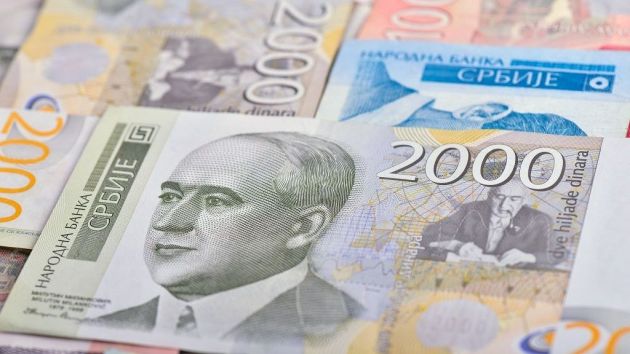EC: Economic Growth of Serbia Subdued This Year, to Accelerate in Next Two Years
Source: Beta
 Thursday, 16.11.2023.
Thursday, 16.11.2023.
 09:22
09:22
 Thursday, 16.11.2023.
Thursday, 16.11.2023.
 09:22
09:22
(Photo: Billion Photos/shutterstock.com)

The commission projects that the Serbian economy is expected to grow by 2.2% for 2023 as a whole. Economic growth is projected to accelerate to 3.1% in 2024 and 3.7% in 2025. Helped by high nominal GDP growth and lower capital transfers to state-owned energy utilities, the general government deficit and debt ratios are expected to continue falling gradually in 2024 and 2025.
Inflation in Serbia in 2023 is projected by the commission at 12.7%. It is projected to drop to a single-digit value in 2024, at 5.5%, and then to 3.6% in 2025, within the central bank’s target band.
In the report, the EC also warns that the growth outlook is subject to a high level of uncertainty with risks tilted to the downside, given Russia’s continuing war of aggression against Ukraine and the intensification of other geopolitical tensions.
Moreover, the commission also warns, a more persistent inflation than currently projected could weaken the pickup in purchasing power and thereby dampen consumption and real growth. It is also estimated that a protracted slowdown in Serbia’s main trading partners, particularly in the EU, could dampen net exports compared to the baseline. On the other hand, increased nearshoring of production (from the EU to neighboring countries) could have beneficial effects on foreign direct investments and exports, the commission assessed.
When it comes to the Western Balkans, a moderate acceleration of the economic growth is expected in North Macedonia and Bosnia and Herzegovina, whereas the forecast has been lowered for Montenegro and Albania. For Bosnia and Herzegovina, the EC forecasts a moderate acceleration of the GDP growth, thanks to a stronger private consumption, a further lowering of the inflation and an increase in external demand. However, the frequent political stalemates are expected to persist, delaying structural reforms and impeding the business environment. As a result, investment is likely to remain subdued. BiH’s economic growth, according to the EC’s forecast, will be at 1.5% this year, 2% in 2024 and 2.3% in 2025.
Montenegro’s economy has continued to grow fast in 2023, driven by private consumption and a good tourism season, but the commission forecasts a drop from 4.9% to 2.7% in 2024 and to 2.3% in 2025, due to elevated inflation, tighter financing conditions and domestic political fragmentation.
In North Macedonia, after the slowing down of the economic growth in 2023, a moderate acceleration is expected, from 2% to 2.7% in 2024 and to 2.8% in 2025. The key driver of the expected growth will be domestic demand and large state infrastructure projects.
The projected economic growth of Albania for 2023 is 3.5%, and it will slow down in 2024 to 3.1% due to lower private consumption, food price increases and lower investments. The stabilization of the prices and the financial conditions will have an impact on a new increase in private consumption and investments and a growth of exports, which will accelerate the economic growth to 3.7% in 2025.
Tags:
European Commission
Western Balkans
economic growth
inflation
income
consumption
gross domestic product
GDP
deficit
energy companies
war in Ukraine
purchasing power
foreign investments
Comments
Your comment
Naš izbor
Most Important News
Full information is available only to commercial users-subscribers and it is necessary to log in.
Follow the news, tenders, grants, legal regulations and reports on our portal.
Registracija na eKapiji vam omogućava pristup potpunim informacijama i dnevnom biltenu
Naš dnevni ekonomski bilten će stizati na vašu mejl adresu krajem svakog radnog dana. Bilteni su personalizovani prema interesovanjima svakog korisnika zasebno,
uz konsultacije sa našim ekspertima.


 Izdanje Srbija
Izdanje Srbija Serbische Ausgabe
Serbische Ausgabe Izdanje BiH
Izdanje BiH Izdanje Crna Gora
Izdanje Crna Gora


 News
News










